The Middle East and North Africa are home to some of the world’s most impressive natural and manmade sites, as well as some of its warmest and most welcoming people. Yet images of conflict and extreme conservatism put many off visiting this stunning and unique part of the world, particularly women. While some parts of the region have been affected by war and have become too dangerous to visit, much of the region is still safe, stable and waiting to be explored.
We’re going to show that you don’t need to be intrepid travellers (or men!) to experience all that the Middle East has to offer! This guide is written by women who have lived and travelled extensively in the region and seeks to offer a wide range of tips including how to stay safe, what to wear, and where to find the best brunch in town… We hope it leaves you excited to explore this amazing part of the world!
First stop… Jordan
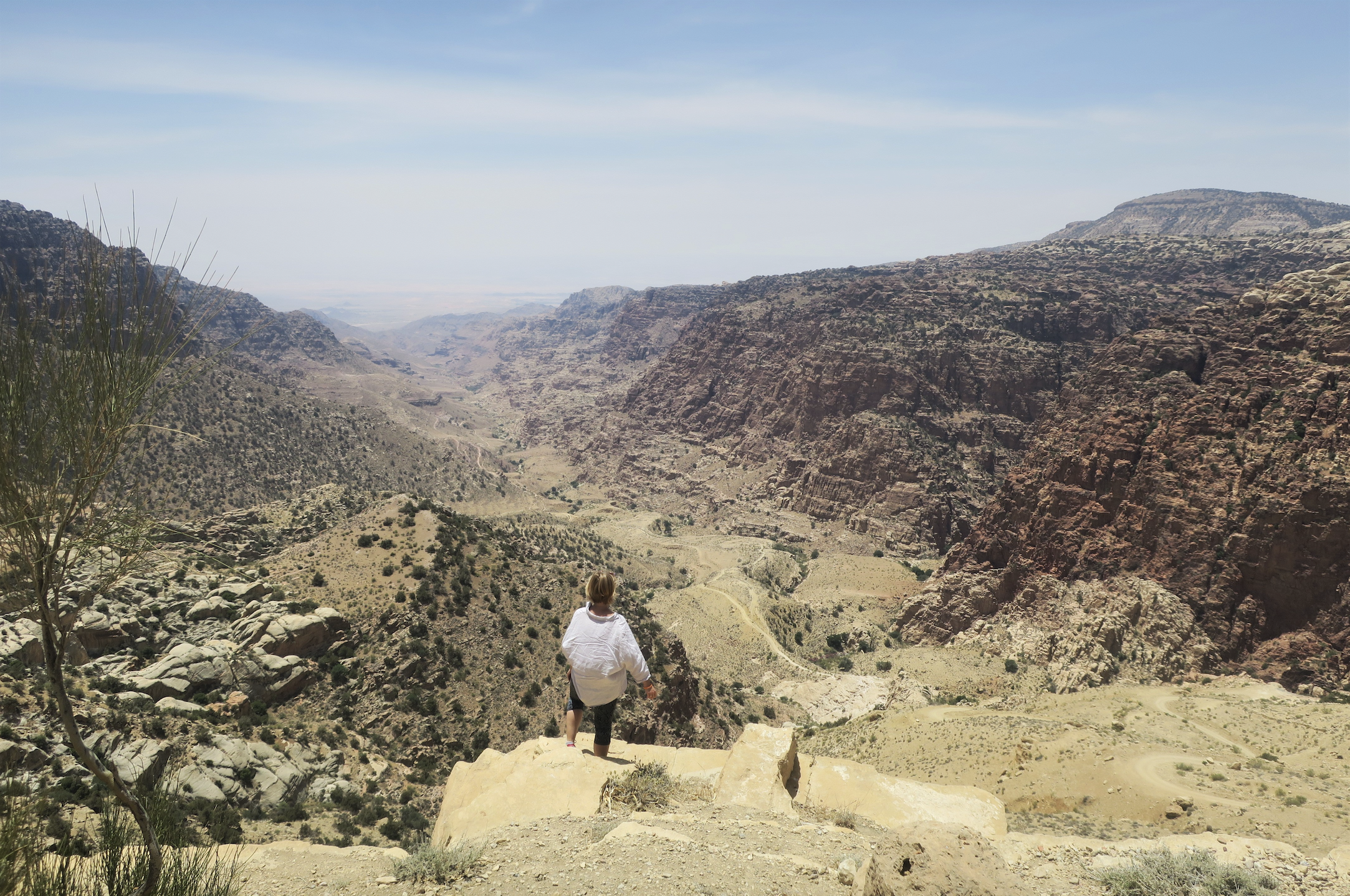
Jordan is a beautiful, chaotic and astounding country, often overlooked due to travellers’ concerns stemming from its precarious proximity to volatile countries such as Israel and Syria. However, as a woman who has lived in this enchanting country, I urge you to be a little braver and reinforce that Jordan is considered a low risk country due to a universal high regard for the country’s internal security forces. In addition, during the past few months I have unabashedly succumbed to the beauty of Jordan’s natural landscapes, its myriad of ancient ruins and the generosity of local people who, despite their hardships, will never hesitate to welcome your presence and offer you a delightful cup of sweet tea.

- Hiking shoes
- Sturdy shoes for day to day walking
- Loose-fitting trousers
- Cardigans or long-sleeved cotton/linen shirts to cover up in conservative areas
- Cotton t-shirts (a perfect pairing with those long strappy dresses that you would like to wear)
- Bug spray
- Sunhat
- Jackets or jumpers (depending on the season, during spring time and even summer, temperatures can be surprisingly low at night as Jordan is a desert country)

Amman is a bustling motley capital that ranges from elegantly formed glass sky scrapers to crumbling beige apartment buildings. The city does not boast the traditional, quaint beauty of many European cities but once you delve deeper into the urban fabric of this metropolis you will find its hidden beauty in the form of a thriving undercover arts scene, magnificent politically-fuelled graffiti pieces spanning facades of entire buildings, the nook and cranny shops of the manic Balad (the old town) selling an assortment of nuts, spices, dried rose flowers, tea leaf concoctions and delicate embroidered dresses.
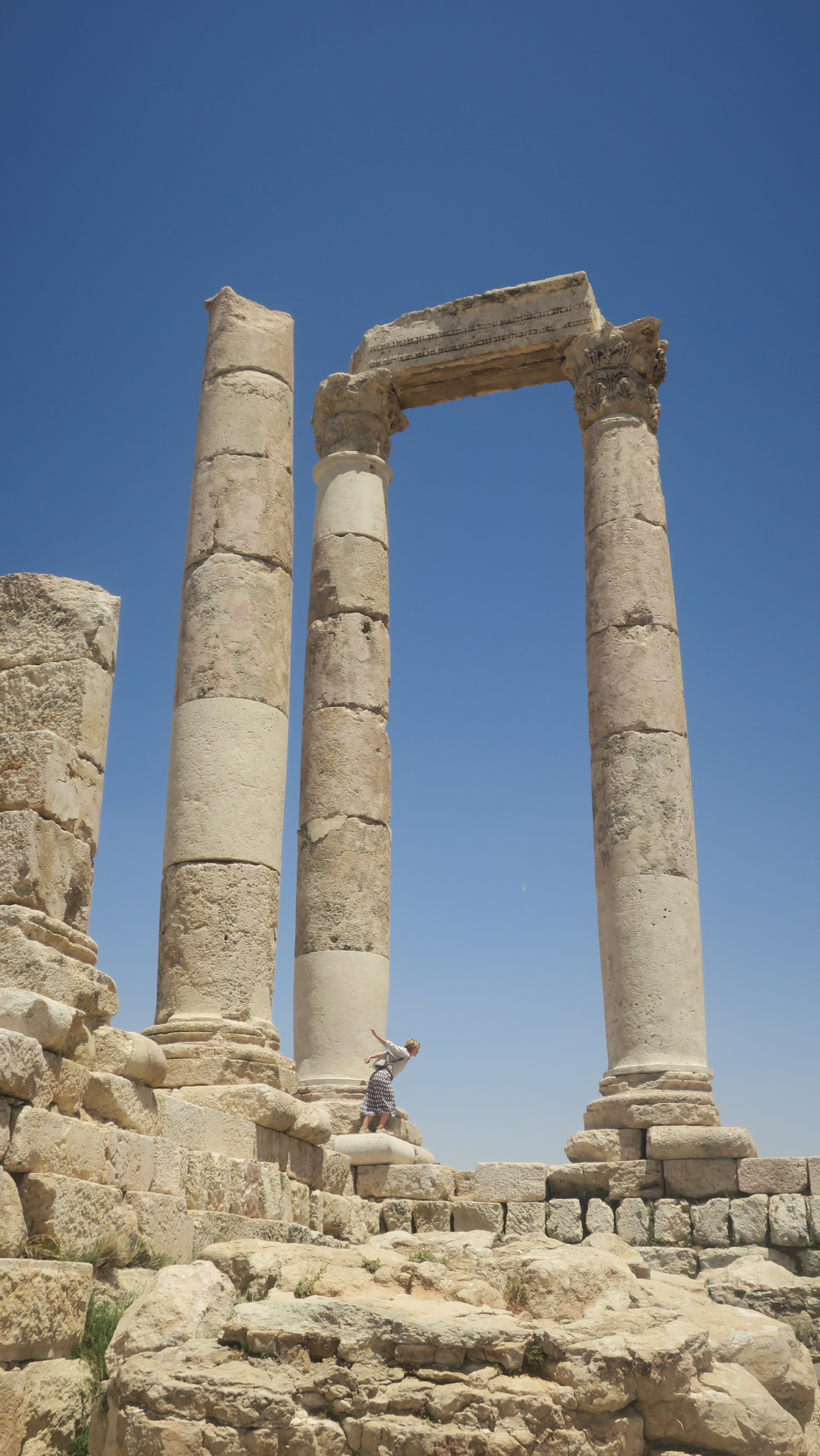 The remarkable citadel site perched at the top of Jabal al-Qal’a is one of the gems of the capital. It offers a magnificent view of the Balad below. During my first visit, my friend and I were enchanted to hear the midday call to prayer for the first time. One after the other the mosques released their music and it felt as if it was washing over the city like a wave of beautiful song. For relaxed afternoons of admin and ticking off that list of things to do, Rumi Café (a favourite of creative young professionals) offers delectable Yemeni tea. On warm summer evenings, the outdoor terrace is full of clientele enjoying the outdoor breeze and beverages.
The remarkable citadel site perched at the top of Jabal al-Qal’a is one of the gems of the capital. It offers a magnificent view of the Balad below. During my first visit, my friend and I were enchanted to hear the midday call to prayer for the first time. One after the other the mosques released their music and it felt as if it was washing over the city like a wave of beautiful song. For relaxed afternoons of admin and ticking off that list of things to do, Rumi Café (a favourite of creative young professionals) offers delectable Yemeni tea. On warm summer evenings, the outdoor terrace is full of clientele enjoying the outdoor breeze and beverages.
The Wild Jordan Center is another favourite for coffee and is one of the few establishments in Amman to serve quality Eggs Benedict. It also offers various organised guided walks and tours in the many gorgeous landscapes of Jordan. Also great for those looking for other forms of adventure, Backpackers Jordan is a well organised, local-run team of enthusiastic guides who offer excellent excursions outside Amman usually involving hiking and abseiling for varying abilities.
For a delicious bite to eat, Shams el Balad is a vegetarian’s dream serving organic and locally sourced foods that will satisfy even the most carnivorous of your friends with gorgeous outdoor seating, a selection of Manakich and refreshing juices (in particular the grapefruit juice, as well as the lentil salad and cauliflower fritter are a delectable treat).

On foot: Transport within bustling Amman is fairly limited to taxis and I encourage you not to tackle the city on foot as you would a European city. The streets can be hazardous, even for locals, due to heavy traffic and few pavements or pedestrian crossings. Every couple of miles you may be blessed to find a footbridge but these are far and few between. Pavements, where they exist, are generally inadequate, uneven and a tad perilous, so strappy sandals are not advisable.
Taxis: Catching taxis in the capital as a single western female can seem a nerve-wracking and complex venture. However, with some basic insight and street-wise behaviour, you will be swiftly on your way to your destination. There are two types of taxis – private taxis and service taxis. Yellow private taxis are your best option and are abundant. They can be easily flagged down by the side of the road.
Many a time, taxi drivers will honk their horn in your direction as they drive past. Don’t be alarmed as this is generally not harassment (as I mistakenly believed for a good while) it is a form of secret Amman lingo where drivers will beep to initiate a ‘do you need a taxi?’ communication and you can signal by raising your hand. If a taxi driver is extremely friendly to you, smiling widely as he encourages you to enter his vehicle… on impulse, I would be wary. Male-female interactions amongst local people on the street are almost non-existent as both sexes are generally not encouraged to make eye contact or initiate conversation with strangers from the opposite sex. Coming from a small, friendly English town, where greeting and chatting to strangers is commonplace, this was a difficult concept to grasp to begin with, however it is useful to bear in mind.
 (image: expat.com)
(image: expat.com)
My experience tells me that the most courteous taxi drivers are those who are apathetic and may indulge in a little polite conversation at most. Friendliness on approach usually entails searching and sometimes impertinent questions that can lead to uncomfortable situations. I have found that many Jordanians have slightly lower social barriers to those instilled upon me by my strict and reserved British culture meaning that they are often inquisitive, sometimes unabashedly asking personal questions – however, this is mostly just people being friendly. I advise you never to feel compelled to respond to questions you feel uncomfortable with and not to generalise or make assumptions. I have had equally unpleasant and pleasant experiences with drivers.
On entering the taxi, tell your driver your desired destination and make sure he understands your instruction. It is essential to ask for the meter, this is the best way to ensure a fair price if you are unfamiliar with the usual fares. The driver will press a button and the fare will begin at 25 kirsh and counting (make sure it is in sight if you can). Sometimes, drivers will not have a meter and this means you will have to barter a price, usually ending up getting whole-heartedly ripped off. Though this can be frustrating, try not to be too disgruntled or hard on the drivers, they earn a measly wage per day and are often over-qualified (I have met qualified engineers who drive taxis) due to unemployment levels and they constantly battle against escalating inflation. If your journey entails sitting in quite a bit of traffic, it would be a kindness to give a small tip to your driver.
Buses: To get outside the city the Jett Bus service is reliable, safe and affordable and offers journeys to Petra, Aqaba and more. I recommend contacting them by phone in advance as Jordanians have a poor track record with responding to emails.

Generally, I would not recommend exploring unfamiliar areas alone. Most safety precautions boil down to common sense, awareness and being streetwise. Often one gets a feeling if a particular area is unsafe as the human self-preservation instinct kicks in. If you are ever lost, approach women or shop owners who are usually incredibly happy to assist in directing you and are pleased to have you in their country.

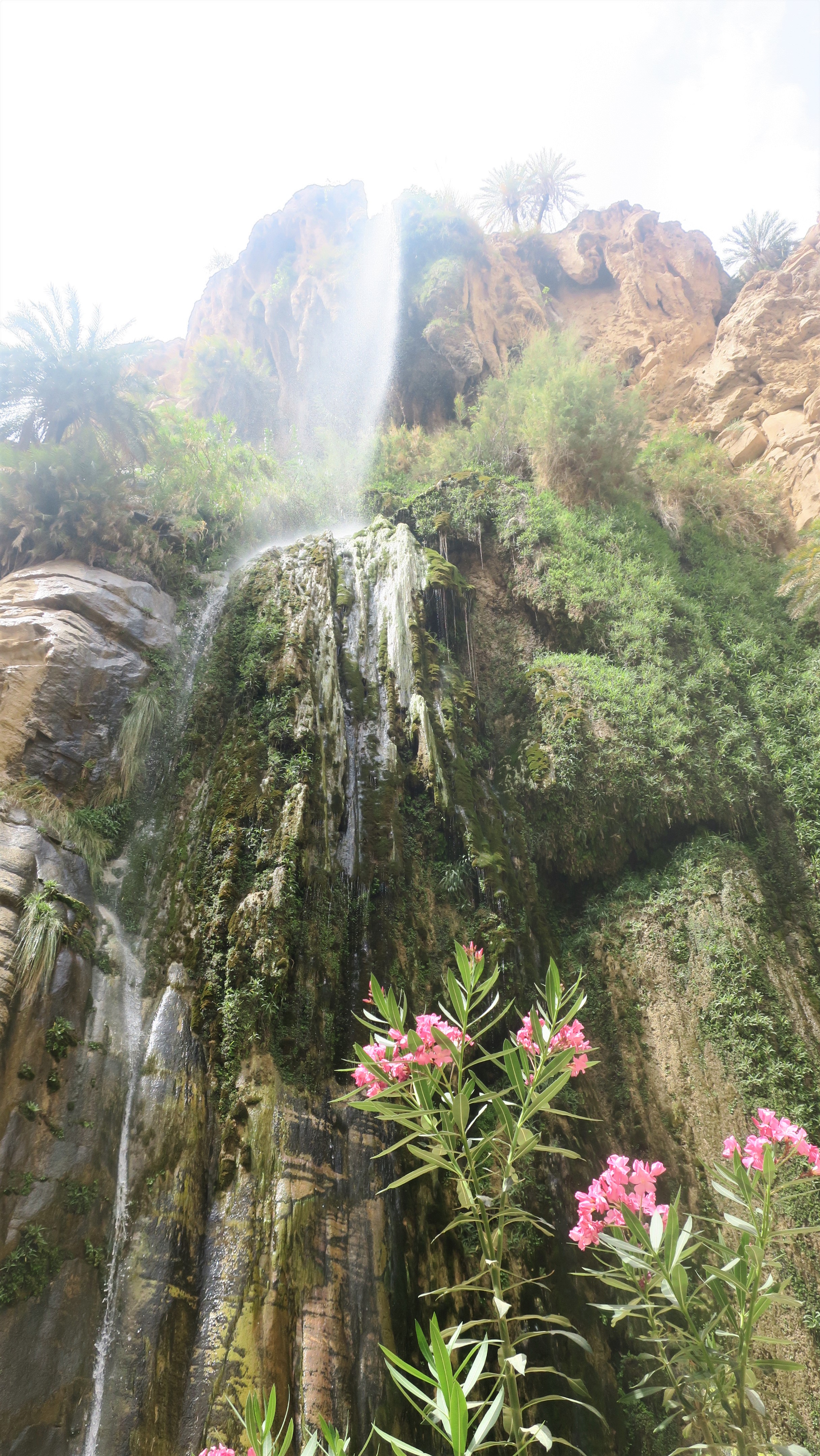
Dana Nature Reserve
Moving away from the noise and chaos of Amman, located in south central Jordan is the wondrous Dana Nature Reserve. Dana is the most biodiverse of all the nature reserves in Jordan as it crosses four bio-geographical zones and is teeming with wildlife; soaring Buzzards, Kestrels, Nubian Ibex and Syrian wolves (though these are rarely spotted). The reserve is a perfect long weekend’s worth of hiking and there are a few quaint guesthouses within the charming 15th century stone village. Dangling beneath the King’s Highway, it commands exceptional views of the valley and is seemingly untouched by the roaring civilisation of the capital.
With regards to accommodation, don’t expect luxury but rather romance; waking up to the pleasant sound of bird song, the tinkling of bells as goat herds are ushered through the village as well as welcoming and knowledgeable hosts who will help organise guides and transport for various hikes. On the various trails, you will discover the reserve’s rugged, magnificent terrain, flowing streams and rich mosses. By far the best time of year to visit is spring time, when the hillsides blossom with blankets of wild flowers, and before the sweltering and oppressive summer heat arrives.
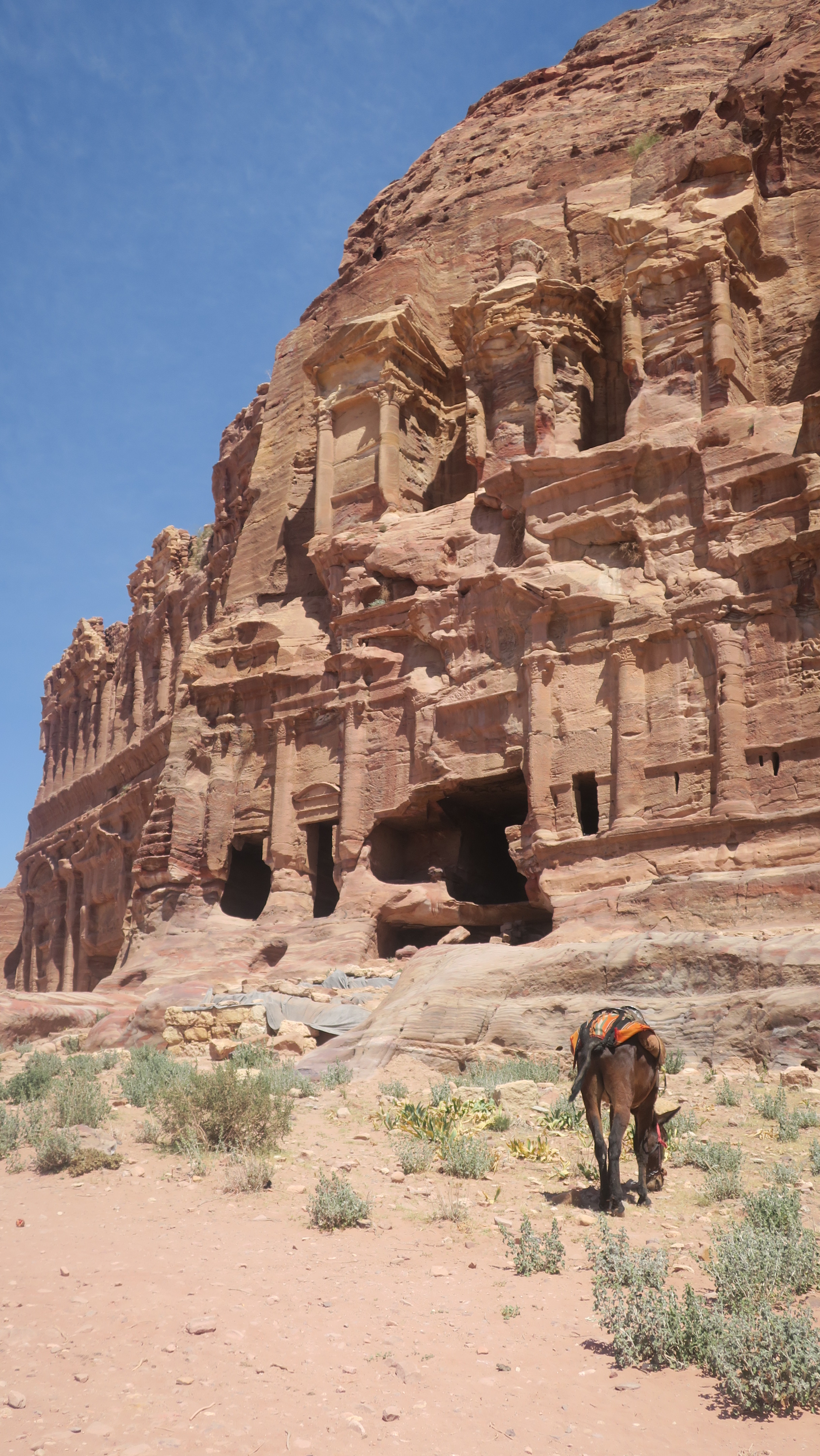 Petra and Wadi Rum
Petra and Wadi Rum
Perhaps the most unforgettable of Jordan’s treasures is the Ancient City of Petra with its elaborately chiselled facades emerging from the pink and orange hued rock. It complements the natural architecture of the rock faces created over thousands of years of wind and water erosion when its stunning canyons were once brimming with water.
Despite visits from tourists from all over the world, Petra remains virtually untouched from their influence and lacks the barriers or white rope found in the museums and historical sites of the West. In fact, visitors to Petra will feel as if they are discovering the city for the first time. Climbing and exploring the ruins is welcomed and nowhere in the huge site appears to be regulated. The only occupants are awed visitors and exotic looking Bedouin men with their kohl black liner and long-legged camels, giggling at portly men and women astride donkeys being led up the hills towards the magnificent monastery.
Clichés aside, striding through the maze of canyons, remarkable facades and seemingly-endless steps, feels like a journey back in time to the romantic era of the Silk Road. Sturdy walking sandals or trainers are highly recommended for a day out in the long-lost city (which is far more extensive than the photos suggest). Scaling the one thousand steps up to the monastery is also undeniably blister-inducing.
Located a few hour’s drive away from Petra, is the violent, moody and ever-changing Wadi Rum desert. Spending the night camping beneath the glimmering stars and watching the sun gradually slicing through the rocky landscape is an unforgettable way to distance yourself from the chatter of our tech-dominated lives.
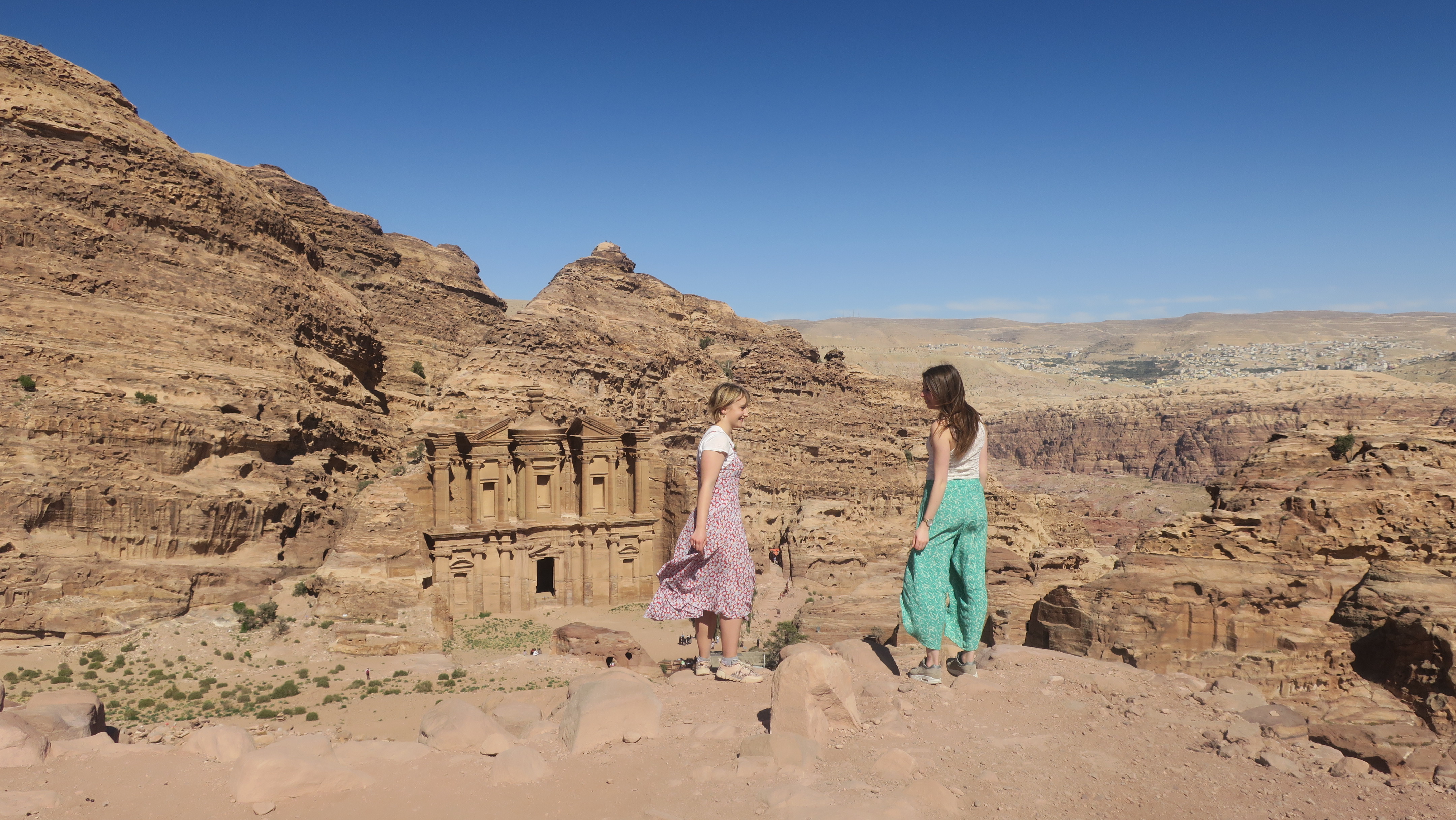
Aqaba
Jordan is blessed with one coastal city with access to the thriving corals of the Red Sea. Aqaba boasts glass-like waters with a magical marine ecosystem just beneath the surface. In Aqaba’s waters you’ll discover a stunning underwater world of intricate coral life, huge succulent sea cucumbers, dainty clown fish, magnificent lion and angel fish and iridescent glittering jelly fish drifting with the gentle tide. Beauty aside, take care not to unwittingly plant your foot or sit on the treacherous black sea urchins that are nestled in crevices amongst the coral, spine-shaped holes. This would certainly dampen the whole experience, so remember to wear flippers or protective footwear.
Despite its infectious holiday maker atmosphere, Aqaba remains a sleepy seaside town with a reputation for quality fish restaurants. The coast is littered with quaint hotels offering snorkelling and diving equipment. Our first venture into the ocean was from one of the few public beaches, where we had access to the delightful underwater Japanese garden known for its beautiful, pristine reef and the variety of species that inhabit it. It is worth bearing in mind that bikini-clad female visitors may not be entirely comfortable sunning themselves amongst the locals as they may unintentionally cause quite a stir. Jordan is a conservative, predominantly Muslim country and women are encouraged to cover up and dress modestly. Even a glimpse of a bare shoulder in some areas is considered a faux pas. For this reason, you may feel more at home and a little less scandalous reclining on a sun lounger at a private beach club, of which there are many and whose clientele are usually an eclectic mix of open-minded Jordanians and western tourists.

Umm Qais
Another perfect destination for a weekend get-away is the small town of Umm Qais. Located in northern Jordan, it is home to the ruins of the ancient Decopalis City of Gadara whose columns in spring time are enhanced by a blanket of leafy greenery, spectacular sprouting purple thistles and clouds of buzzing bumble bees. Expect to see herds of local cattle grazing amongst the ruins.
The secret garden aesthetic to Umm Qais is beguiling, as are the spectacular views of the three countries surrounding Jordan – Syria, Israel and the Palestinian Territories, encompassing the Golan Heights, Mt Hermon and the Sea of Galilee. Palestinians will often visit this site to catch a nostalgic glimpse of their former homeland.

Just a short drive from the ruins, you will find the Yarmouk reserve, bordering the Golan Hill and stretching over a small area overlooking the river Yarmouk. The river marks the border between Jordan and Syria. It protects a swathe of deciduous oak forest along with two species of rare orchid, mammals including otters, hyenas, wolves and the threatened mountain gazelle. The reserve is a wonderful site for hiking and environmental education. However, due to its proximity to both the Syrian and Israeli borders, you may require permission to enter from Jordan’s security services.

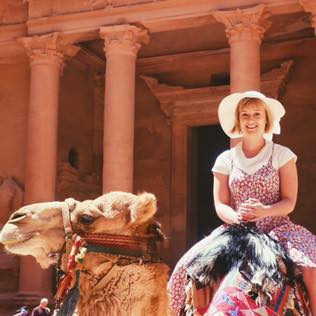 Lydia Jane Daniels is 21-year-old Durham linguist and passionate traveller with a fascination with the Middle East. She studies Arabic and Spanish and spent her year abroad living in Jordan and studying at the Qasid Institute in Amman during 2016/2017. Lydia’s experience in Jordan has encouraged her to continue to explore the region, and her next adventure will take her to Rabat, Morocco.
Lydia Jane Daniels is 21-year-old Durham linguist and passionate traveller with a fascination with the Middle East. She studies Arabic and Spanish and spent her year abroad living in Jordan and studying at the Qasid Institute in Amman during 2016/2017. Lydia’s experience in Jordan has encouraged her to continue to explore the region, and her next adventure will take her to Rabat, Morocco.
If you found this interesting, you might also like:
The Best Cities to Study Arabic in the Middle East: Amman
6 ways to experience the Middle East without leaving London
Morocco: Echoes of the Orient
Please leave a comment or send an email to info@pinkjinn.com if you have any questions, suggestions, or other information you would like us to include in this series. We’d love to hear from you!
Header image: Follow Me To… Petra (Murad and Natalya Osman)







Really interesting read, makes me a lot more inclined and determined to visit this part of the world. Thank you!
Excellent article and photos. So neat to discover new and exciting travel destinations around the world. Jordon is certainly a unique area.
Join the expatriates services group in Facebook
Or
Click the link
https://www.facebook.com/groups/573158662890170/
Join the expatriates services in Jordan in Facebook
https://www.facebook.com/groups/573158662890170/
Petra and Wadi Rum are absolutely phenomenal. I got used to the weird taxi honking behavior in Tbilisi, they often do the same there (and I’m a guy, so was doubly thrown off by it at first), so when i was in Jordan it wasn’t such a big surprise. In all loved the country. There’s a guy named Ghassab on couchsurfing near Petra, he’s got a cave in the desert. I definitely recommend staying with him if you ever go back.
Thanks so much for the tip! So glad you enjoyed Jordan. Such a wonderful country and amazing, welcoming people. PJ
I just spent a year teaching and studying in Amman. Your advice on taxis is spot on for female travelers. My favorite drivers were the ones who listened to the Qur’an and barely spoke to me. Love the blog by the way!
Thank you so much, Madison! Really glad you’re enjoying the blog. Yes, taxis in Amman can be a bit tricky, though I’ve recently started using Uber there and have never had any problems! It was also excellent value and great not to have to haggle…
I hope you had an amazing year in Jordan! Laura x